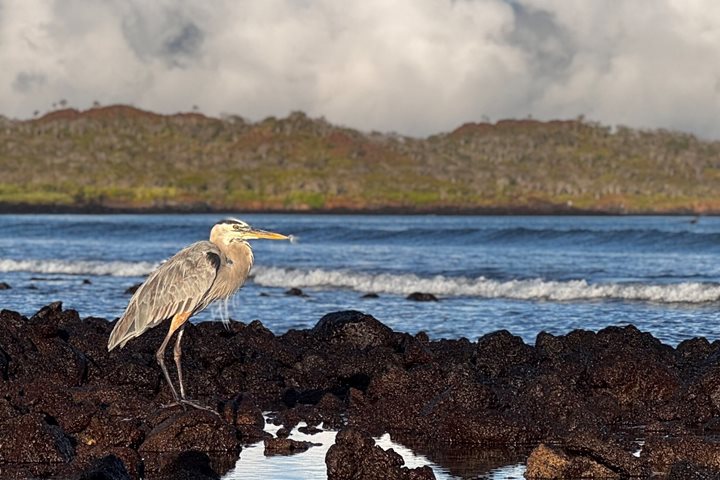A sunny and bright day welcome us into Dragon Hill, where our target was to find the amazing land iguanas of the Galapagos. The trail was easy, beginning at an organic beach surrounded by shore vegetation where some marine iguanas were warming up.
Afterwards on a brackish lagoon we saw a flamingo, a juvenile by himself, feeding on shrimps. Going deeper into the arid zone, away from the breeze of the ocean, we found our first land iguana on the distance. Later on, we saw two of them fighting, probably to win the attention of a female.
Conolophus subcristatus is found on four different islands, on eleven different patches. Research done shows that there is an absence of juveniles, and that there are more males than females. The population is threatened by the introduced black rat and feral cats. At the moment, there are 11,435 individuals.
Conolophus pallidus is found only on Santa Fe island. Is not threatened, there are more males than females and there are 5,016 individuals. Its natural predators are the endemic snake and the endemic hawk.
Conolophus marthae or the “pink iguana’ is found only on Wolf Volcano on Isabela Island at 500 m.s.n.m. This population of 545 individuals is also threatened by black rats and feral cats and there are also more males than females.
We were also able to see land iguanas’ nests along the trail. This is why naturalist insist always to keep on the trail marked by the National Park Service, since they keep us away from destroying the nests and also the eggs inside of them. We all were very happy to be able to participate in the conservation of the islands and its ecosystems following rules provided to make sure we do not disturb this unique spices.
The walk was incredible, the landscape and the breeze will remind us how lucky we are, being able to create memories together with our family members and friends.







